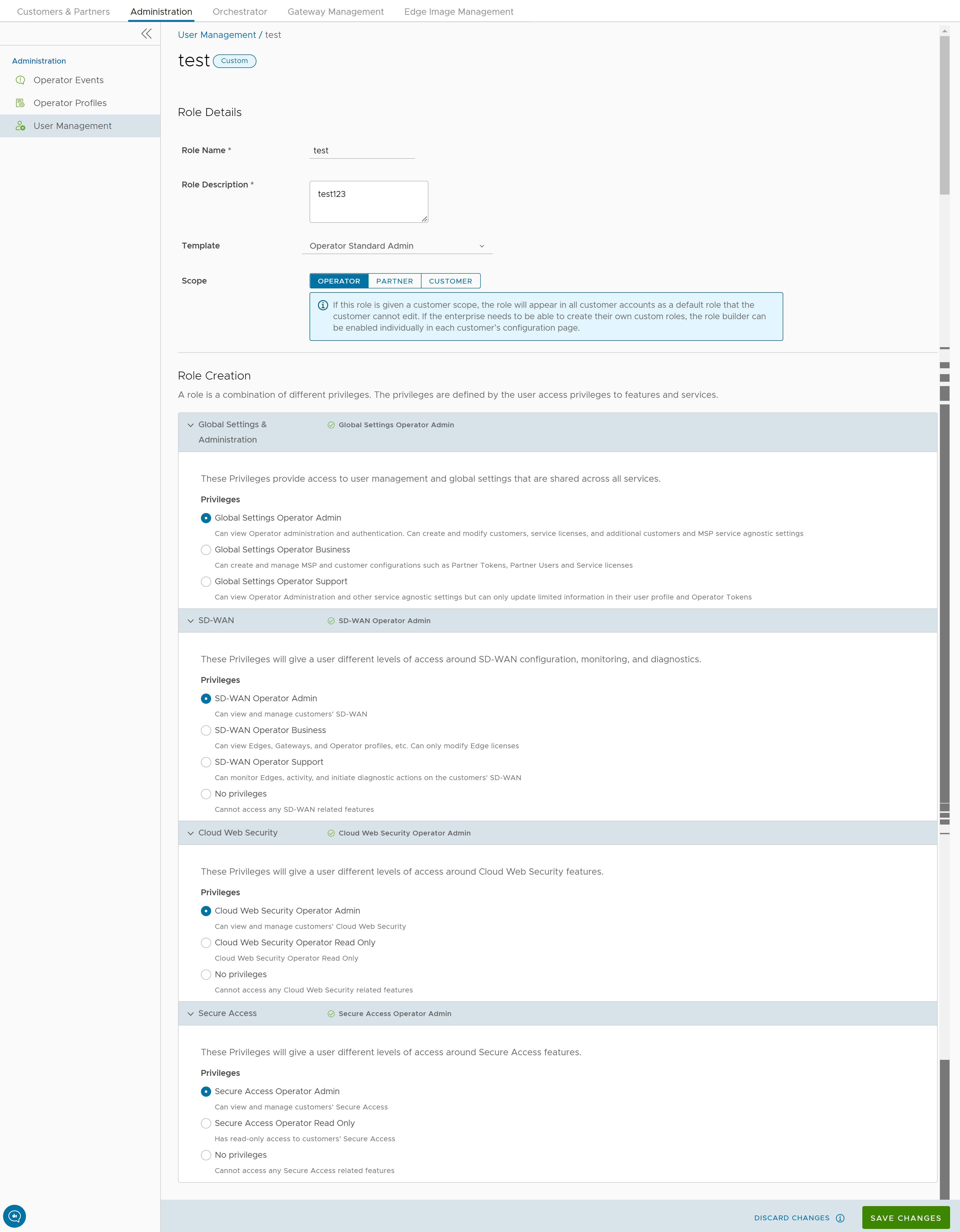To add a new role for an Operator, perform the following steps:
Procedure
- In the Operator portal, click Administration from the top menu.
- From the left menu, click User Management, and then click the Roles tab.
- Click Add Role.
The following screen appears:

- Enter the following details for the new custom role:
Option Description Role Details Role Name Enter a name for the new role. Role Description Enter a description for the role. Template Optionally, select an existing role as template from the drop-down list. The privileges of the selected template are assigned to the new role. Scope Select Operator, Partner, or Customer as the scope of the role. The new role appears in all the accounts for the selected user, as a default role. Depending on the selected scope, the privileges displayed in the Role Creation section, vary. For example, if an Operator creates a role for a Partner, it appears in the Partner's roles' list and can be edited only by an Operator and a Partner user who has the required permissions. Role Creation Global Settings & Administration These privileges provide access to user management and global settings that are shared across all services. Choosing this privilege is mandatory. By default, Global Settings Operator Support is selected. SD-WAN These privileges provide the user with different levels of access around SD-WAN configuration, monitoring, and diagnostics. You can optionally choose an SD-WAN privilege. The default value is No Privileges. Cloud Web Security These privileges provide the user with different levels of access around Cloud Web Security features. You can optionally choose a Cloud Web Security privilege. The default value is No Privileges. Secure Access These privileges provide the user with different levels of access around Secure Access features. You can optionally choose a Secure Access function privilege. The default value is No Privileges. - Click Save Changes.
The new custom role appears in the User Management > Roles page of the user, depending on the selected Scope. Click the link to the custom role to view the settings.